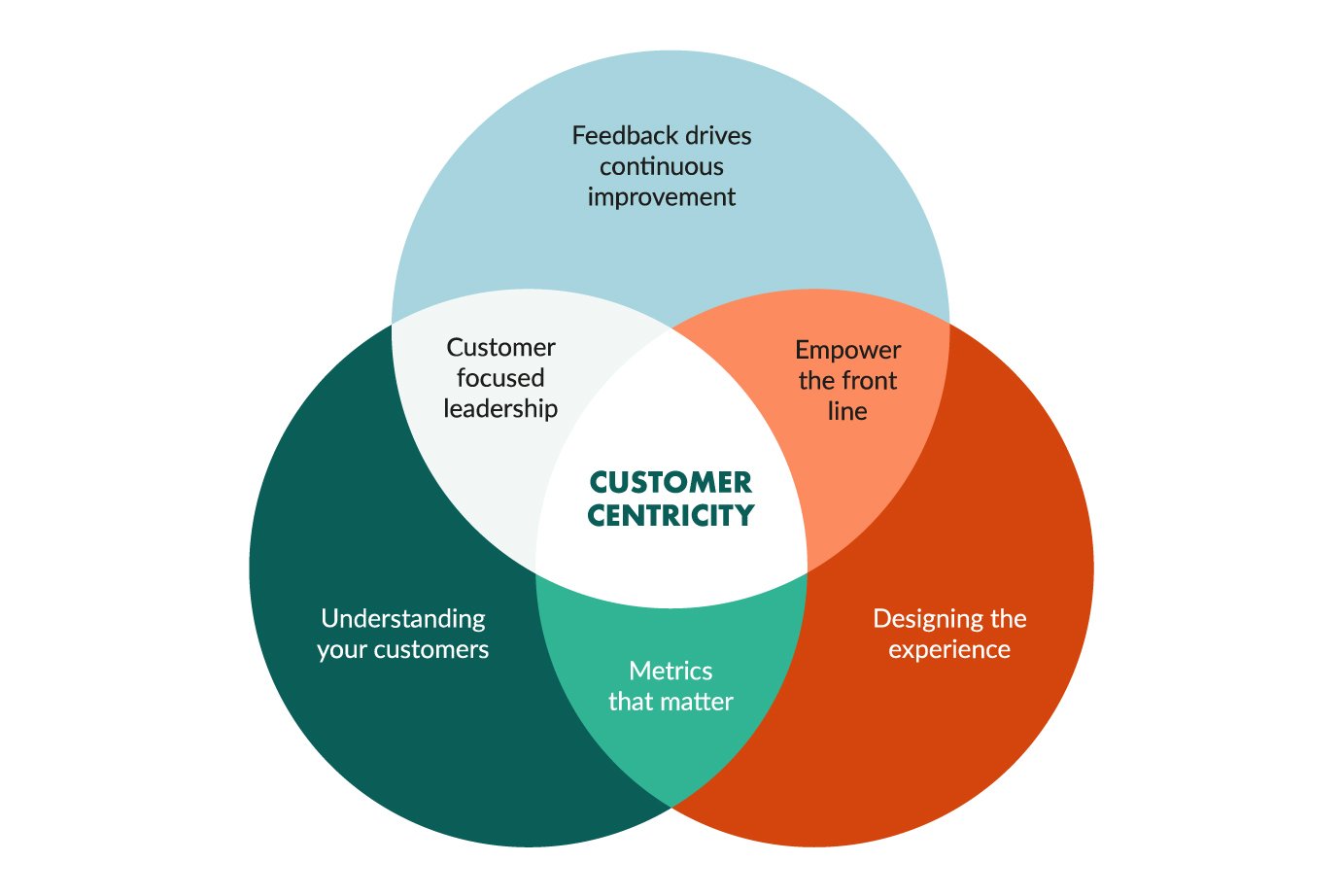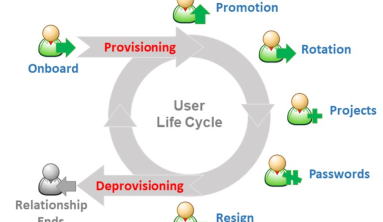
The world has evolved so fast that customers today are in more control over businesses than ever before. Their needs determine how they shop, who they shop with and where they carry out transactions — online, offline, both. Customers today dictate how brands shape their customer experience, as well as the sales funnel, marketing efforts and many more.
With the changes in customer aspirations, the main challenge is, how to redefine business operations in every industry to be more customer-centric, tailor-made around the needs of customers.
Research has shown that companies that apply customer-centric strategy and tips are 55% more profitable. In addition, such a company’s customer-centricity needs to be more than mere words on a page. It goes beyond a few employee meetings or customer targeted surveys. The customer-centric strategy should essentially be the values that are truly integrated into the culture of the company.
If you desire to improve your business in-line with the recent trends promoting customer-centric values, we’ll discuss in this article, ways that will help you achieve this and deliver great customer experience to your customers.
What is a Customer-Centric Company?Being customer-centric means to offer excellent customer experience from stages of awareness, through purchasing and finally post-purchase stage. Being a customer-centric company requires carrying out business activities in a way that promotes great and positive customer experience before and after the conclusion of sales. This way, companies assure to nurture the culture of repeating customers as well as customer loyalty and ultimately increased profits.

Picture 1. Word of mouth is powerful
For more clarity, customer-centricity simply makes your customers satisfied and loyal to a company or brand. One happy customer, according to American Express, will bring up to 8 new referrals. Utterly, leading to more positive referrals, more new leads and an increase in sales.
What is a Customer-Centric Strategy?
As a customer-centric brand, you are required to envisage potential ideas and create services that would go above and beyond the expectations of your customers. The design of your company should be based on customer perspectives focusing on their needs. You should anticipate their needs and excite them with delightful services beyond their imagination which they will utterly love.
Picture 2. Benefits of a customer-centric strategy
Your customer is your priority and should take the core position around which your business revolves. Before any decision is made in a customer-centric company, the effect of such action on customers is deeply considered.
Again, combining customer priority with customer relationship management in your business avails you a wide range of data with a 360 view of your customers. With this information, it’s much easier to build strategies that will enhance your customer experience positively. You will be able to understand the customers’ buying behavior, their choices as well as identification of opportunities for service creation.
Why Being Customer-Centric is Important?
With the constant changes in favor of the customer, customer-centricity seems to be a pretty obvious strategy every business today needs to create if they want to succeed and increase profits.
Making customers happy is the driving force behind every successful business. Their needs are paramount and influential on production and sales of services leading up to more business, loyalty, customers and finally profit. If you do not acquire and retain these customers, your business would fail. If a customer finds your product perfect and suitable as a solution to his/her need in addition to exquisite support, you surely do have their loyalty. They will also respond positively when you upsell with further recommendations to their colleagues, friends, and family leading to your business growth.
Hence, the basic reason behind any customer-centric brand lies in understanding who their customers are as well as their needs. Without this, such an organization would create poor customer services or make the wrong resource investments.
However, just like any good tenet of marketing, different layers and methods are required to achieve better customer-centricity.
Challenges Associated With Being Customer-Centric
Knowing what is involved in becoming a customer-centric brand and applying the solutions to customer relationship management problems is not enough. It is also important that you are aware of the challenges a company might face in trying to make your business more customer-centric.
The growing daily changes in customer service delivery have enabled customers to easily compare brands while making a choice of product to purchase. Truly becoming a customer-centric brand requires that you have an exhaustive understanding of the communication within your company.

Picture 3. Company centric culture hierarchy
Poor communication between various departments of your company can posit challenges. Customer-centricity is a belief wherein a top-down approach is applied. To effectively achieve the culture of customer-centricity, the corporate culture has to change too. Usually, propaganda trickles from the top management down to the last man at the bottom of the company chart. As a solution, changes can be substantiated with measurable ROI’s for each level. The top management should actively be involved in making this transformation.
Again, the silo culture can make communication, shared targets and data impossible. The unrefined functional and product silo design of organizations often make operationalizing around customers difficult. Each silo has its structure of operation, processes and oftentimes technology relegated to it. Joining up distinct silos, in a bid to deliver unique experience often turns out to be a step too far. Instead, these individual silos can be involved in separate duties to build up various sections during product creation.
If these are in order, information can be duly spread across departments. With this, you will get a better sense of your loyal customer/audience; targeting them with the right content or product in addition to finding new customers.
Read how to overcome the silo effect by creating Customer Journey Map which will help you carry out the omnichannel strategy!

What is a Customer-centric Culture?
The customer-centric culture involves making customers a priority to your employees. There should be eagerness for a holistic understanding of customers’ needs. Since a customer-centric brand has the customer experience as its core value, your employees should be trained to understand this and also apply it in their responsibilities. They should be made to duly understand how their work impacts the customer and try to put things in the customers’ perspectives for maximum customer satisfaction.
How to Create Customer-Centric Strategy + Tips You should Implement for Your brand
Customer-centric experience is becoming a thing of tangibility that requires adoption and embodiment of skills and competencies to make it a reality in your brand. Building a customer-centric organization in today’s digital world is increasingly becoming complicated. While new technologies have allowed companies to roll out changes quickly, there’s now an expectation from customers for greater customer attention. Since these customers are becoming more informed and empowered in product choice, you need to place yourself in their shoes in order to exceed their expectations and deliver excellent expectations.
To implement a customer-centric strategy you should put the customer needs and wants in addition to a preference for communication at the starting point of the purchase process. The following strategies and tips are rudimentary and will help you transform your business into a customer-centric company.
Adoption of the customer-centric culture
Companies that are customer-centric should employ staff that is empathic and focused on customer needs. Therefore, you should make the customer needs, a core value of your company before hiring employees who would be expected to uphold this value.
Make it clear before they’re hired that they’ll be expected to understand what the customer needs and develops ideas targeted at realizing them. They should believe in bringing true value to clients rather than offer lip service. From start to finish, they should live and breathe the concept of customer-centricity.

Picture 4. Hire staff that focus on customer needs
Customer research
Sales brands with positive customer experience in mind go a step further to understand their customers both collectively and on an individual basis. The more you improve on your customer experience through research about your customers, the more customers you will attract.
Therefore learn to monitor your performance. See how the customer feels about your brand by creating communication lines via call-center logs, social media feedbacks, or transitional surveys. Also, written feedback can be collected, analyzed and implemented across multiple channels- That seems to be the best method of understanding and delivering customer-centric experience. Customers want to connect with brands as they desire, therefore, you should be able to listen, understand them and implement new strategies to cater for their needs even after the sales have been completed. Customer relationship management should be properly utilized to fully understand customer needs.

Picture 5. Monitor performance
Working with customer preferences and trends can help to fight a decrease in brand loyalty. Seeing their needs placed as a priority at the end of the response to feedback gives them a reason not to turn their backs on your brand. This customer-centric strategy is key to the development and growth of services since it creates loyal customers. After all, it is very easy to love a brand if the love is reciprocated.
Create deeper connections with data obtained
Take advantage of the wealth of knowledge and analysis gotten from customer research as they can provide you with a predictive model to put your customers in the center of all you do. This customer-centric strategy ensures you know exactly what your customers want as well as how they shop. With it, you can predict and create probable experiences that they are more likely to enjoy, share and repeat its use.

Picture 6. Use collected data to create unique experiences
Optimize your customer marketing strategy
Implementing a customer-centric strategy that takes into cognizance the influence of digital marketing, helps to monitor and measure your engagement with your customers. Digital marketing has not only greatly overturned how brands can reach customers, but it has also made an impact on how to detect the level of engagement you have with these buyers. Thus, thanks to various marketing tech and multi-channel strategies, a customer-centric brand has the opportunity to focus more on the customer rather than itself.

Picture 7. Optimization is crucial
Empower and encourage your employees with reward
Even though customers are the core value of your business, your staff are the frontline of your business in your pursuit of a customer-centric organization. Therefore, a customer-centric strategy that empowers your employees enables them to make the required decisions that would readily meet those customer needs. Giving your customer service professionals the necessary tools, skills, and confidence to identify opportunities, and present effective solutions for every customer interaction ensures that your customer service truly translates into sales. Your company should boast of a wealth of insight on your customers and internal operations. This would quickly enhance customer experience by way of individual interactions and behind the scenes decision making from your equipped employees.

Picture 8. Employees reward
Final Thoughts
In conclusion, companies are reacting in various ways and learning the concept of being more customer-centric. Any business that still runs with siloed data, lack of customer knowledge, and a rewards structure that prioritizes generating revenue over meeting the needs of your customers, still has some work to do because the survival of today’s business depends on the opposite.
The most common obstacle to achieving customer-centricity is the lack of customer-centric brand culture. This culture aligns business leaders’ choice to deliberately cultivate the mindset and values in their team. To successfully implement a customer-centric strategy, this culture must be recognized and go hand in hand with any of these strategies.
The suggestions of strategies to implement are endless. But in all, the above strategies and tips are to guide you in thinking and developing your own solutions specific to your organization. You need to develop strategies that focus solely on benefiting your type of customers. Also, identify different technologies that are capable of supporting the delivery of the distinct customer-centric experience. Implement these strategies and you would have a loyal customer database that will rake you more profits and greater lifetime value.
Source: Internet





